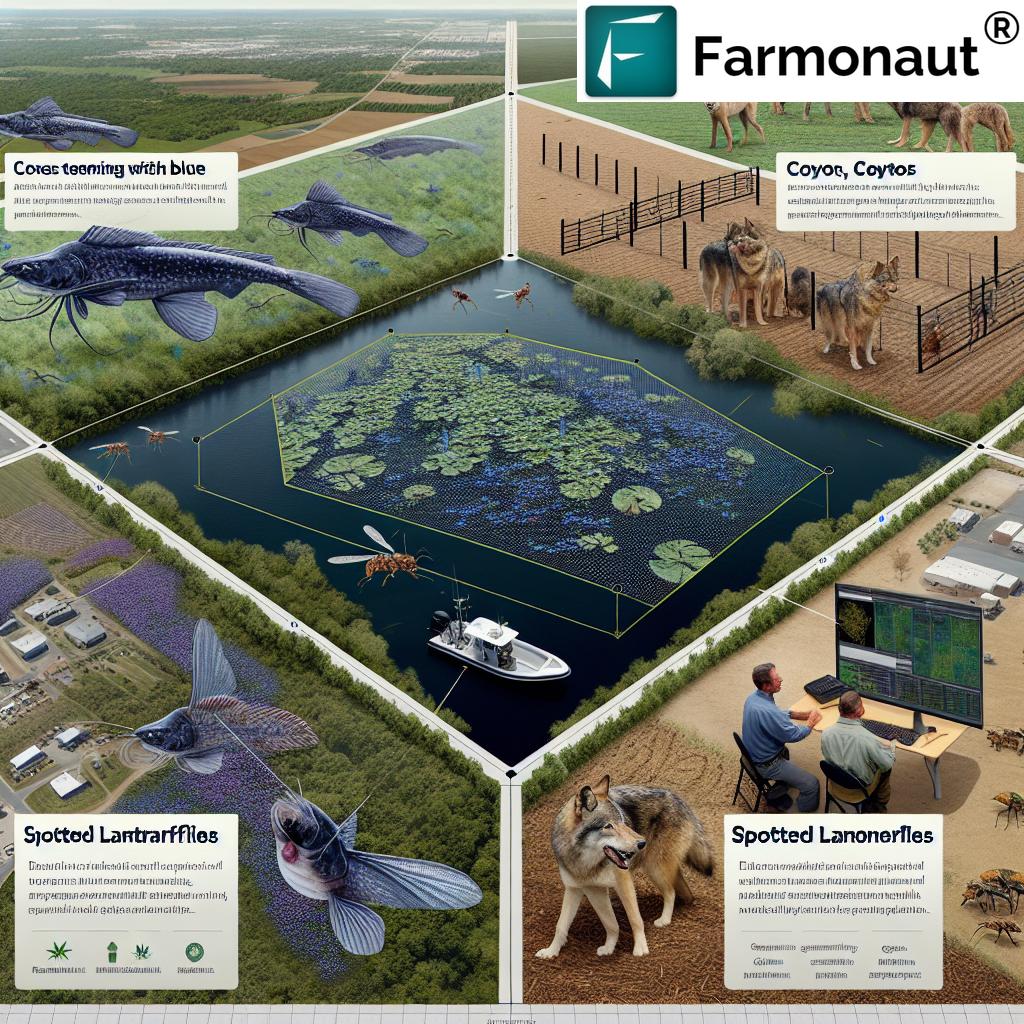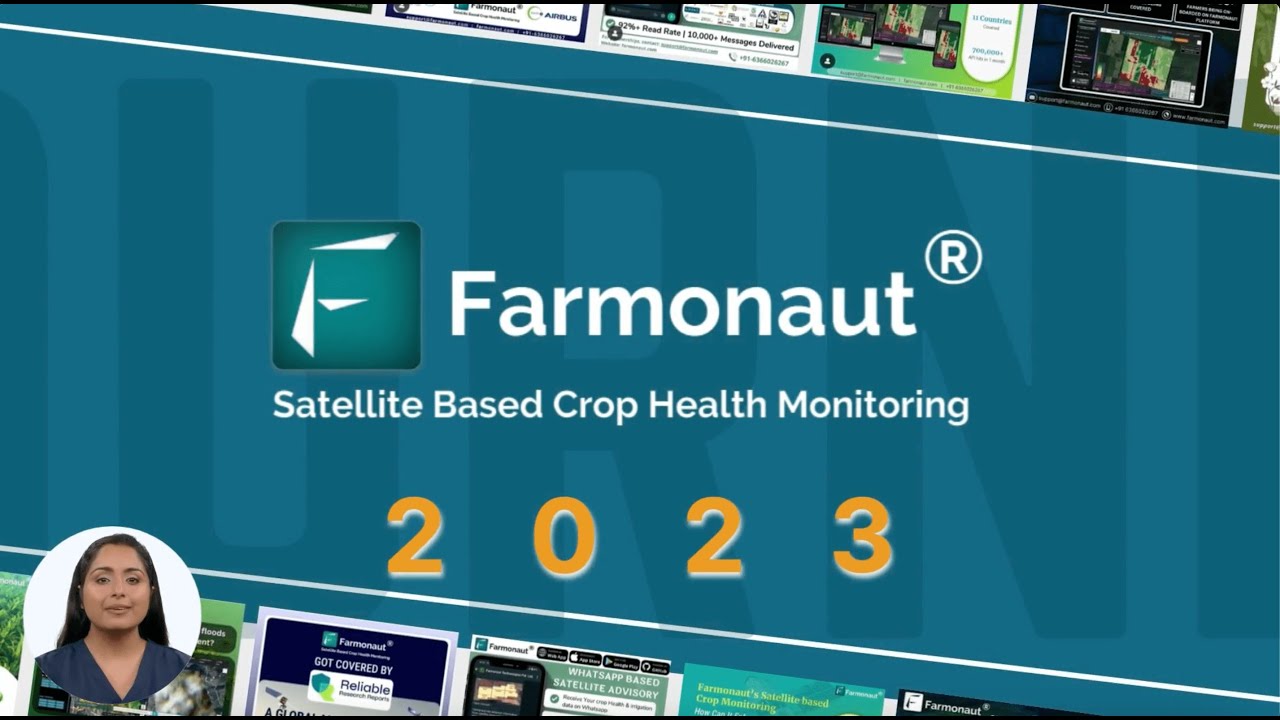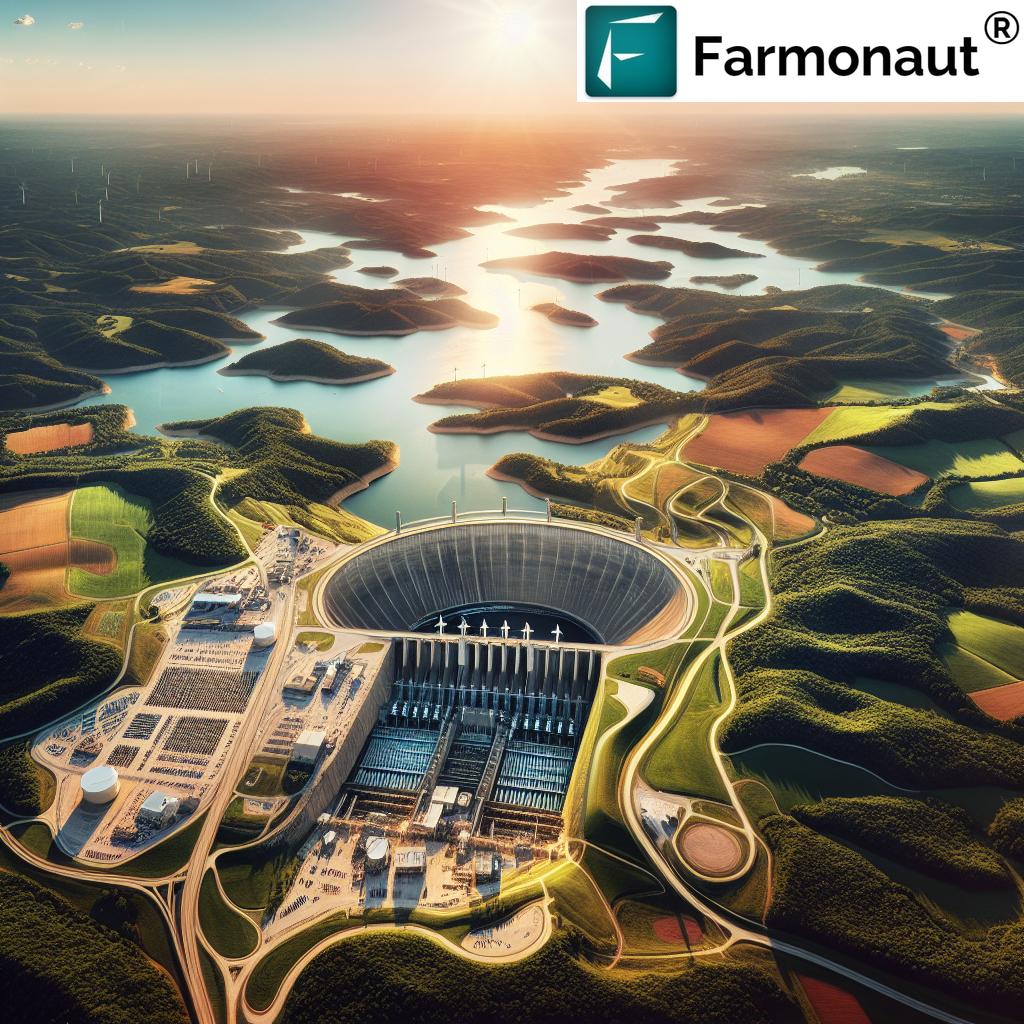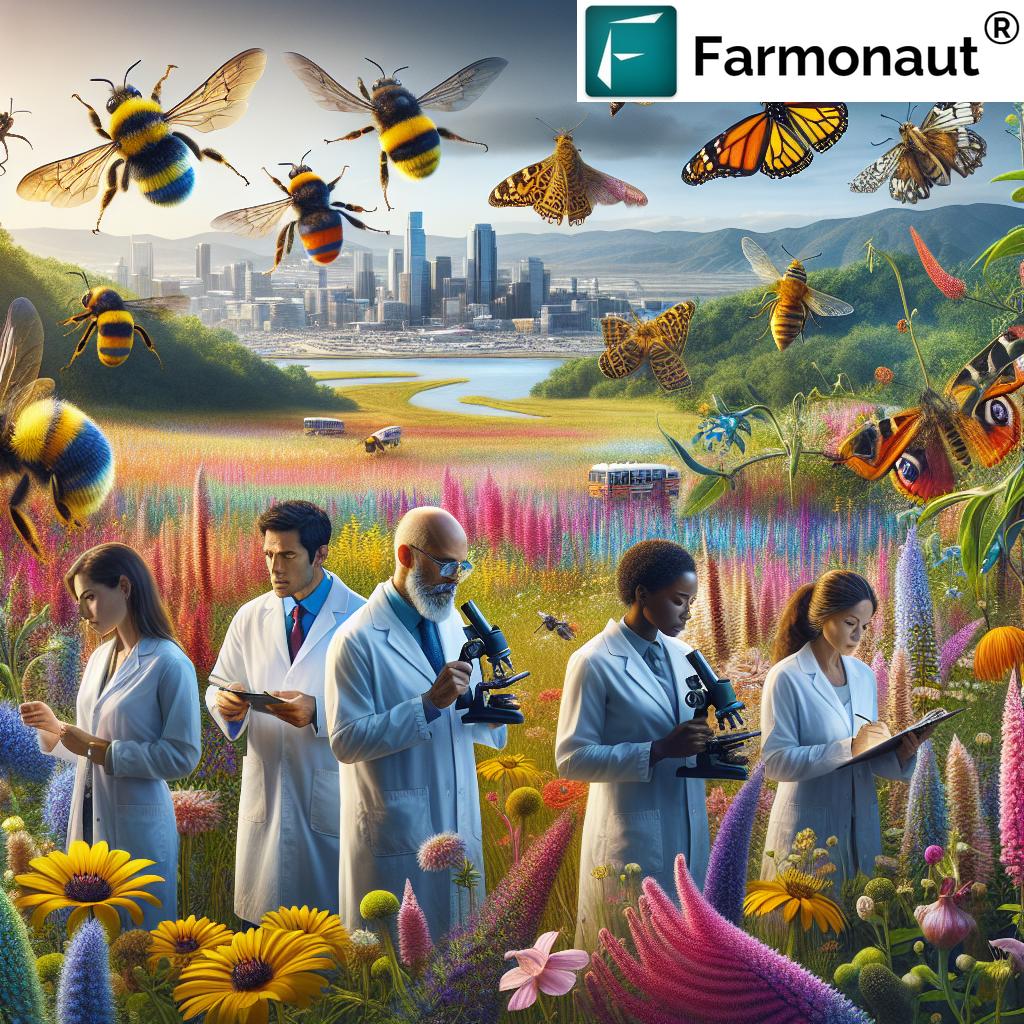Invasive Species in Maryland: 5 Scary Threats to Native Ecosystems and Agriculture

“Maryland faces 5 major invasive species threats, including blue catfish, coyotes, northern snakeheads, spotted lanternflies, and sika deer.”
Welcome to our eye-opening exploration of the real-world invaders disrupting Maryland’s ecosystems and agriculture. As we delve into the world of invasive species management, we’ll uncover the challenges these biological intruders pose to our native wildlife and farming communities. Join us as we navigate through the complexities of ecological impact and discover sustainable solutions to protect our cherished landscapes.
Understanding Invasive Species: A Growing Threat to Maryland’s Biodiversity
Invasive species in Maryland pose a greater threat than any fictional monster could ever hope to achieve. These non-native organisms have found their way into our state’s diverse ecosystems, often through human activities, and are now wreaking havoc on the delicate balance of our natural world. From our lush forests to our bountiful Chesapeake Bay, no habitat is immune to the destructive potential of these unwelcome guests.
As we explore the five most concerning invasive species in Maryland, we’ll uncover the intricate web of ecological relationships they disrupt and the cascading effects on our native flora and fauna. Understanding these impacts is crucial for developing effective wildlife conservation strategies and implementing sustainable farming practices that can withstand these biological pressures.
The Voracious Blue Catfish: A Threat to Aquatic Ecosystems
Our first invader, the blue catfish, has made quite a splash in Maryland’s waterways since its introduction. Originally native to the Mississippi, Missouri, and Ohio River basins, this formidable fish has become a dominant force in the Chesapeake Bay and its tributaries.
- Rapid growth and large size (can exceed 100 pounds)
- Opportunistic feeding habits, consuming a wide variety of prey
- Outcompeting native species for food and habitat
The blue catfish’s presence has serious implications for aquatic ecosystem protection. Its voracious appetite and ability to thrive in various water conditions have led to a decline in native fish populations, including economically important species like blue crabs and shad. This not only disrupts the natural food web but also impacts commercial and recreational fishing industries.
To combat this aquatic invader, we need a multi-faceted approach to invasive species management:
- Encouraging targeted fishing efforts to reduce populations
- Implementing strict regulations on live transport of blue catfish
- Conducting ongoing research to better understand their ecological impact
- Developing market incentives for commercial harvest and consumption
By addressing the blue catfish invasion, we can work towards restoring balance to our aquatic ecosystems and protecting the native species that call Maryland’s waters home.
The Adaptable Coyote: An Expanding Presence in Maryland
As we shift our focus from water to land, we encounter another formidable invader: the coyote. While not traditionally considered an invasive species, coyotes have expanded their range eastward, including into Maryland, largely due to human-induced changes in the landscape and the eradication of larger predators.
- Highly adaptable to various habitats, including urban areas
- Opportunistic diet, ranging from small mammals to fruits and vegetables
- Potential impact on populations of native wildlife and livestock
The presence of coyotes in Maryland presents a complex challenge for wildlife conservation strategies. While they can help control populations of smaller predators and rodents, they also compete with native species and can pose a threat to domestic animals.
Effective management of coyote populations requires a balanced approach:
- Educating the public on coexistence and conflict prevention
- Implementing non-lethal deterrent methods in urban and suburban areas
- Monitoring their impact on native wildlife populations
- Developing targeted management plans for areas with significant conflicts
By understanding and adapting to the coyote’s presence, we can work towards minimizing negative impacts while recognizing their potential role in our evolving ecosystems.
The Aggressive Northern Snakehead: A Predatory Fish Causing Concern
Our third invader brings us back to the water, where the northern snakehead has been making waves since its discovery in a Maryland pond in 2002. This aggressive predator, native to parts of Asia, has raised significant concerns among ecologists and anglers alike.
- Voracious appetite, preying on native fish, amphibians, and crustaceans
- Ability to survive out of water for several days and “walk” short distances on land
- Rapid reproduction rates, with females capable of laying up to 15,000 eggs per spawn
The northern snakehead’s presence in Maryland waters poses a serious threat to aquatic ecosystem protection. Their aggressive predation and competitive nature can lead to declines in native fish populations, potentially altering the entire food web structure of our waterways.
To address this aquatic invader, we need a comprehensive approach to invasive species management:
- Implementing strict regulations on possession and transport of live snakeheads
- Encouraging anglers to remove and report any snakeheads caught
- Conducting ongoing research on their ecological impact and potential control methods
- Developing public education programs to prevent further spread
By taking action against the northern snakehead, we can work towards preserving the delicate balance of our aquatic ecosystems and protecting our native fish species.
The Devastating Spotted Lanternfly: A Threat to Agriculture and Forests
“The spotted lanternfly, one of Maryland’s invasive species, causes devastating agricultural damage across multiple crop types.”
Our fourth invader takes to the skies and poses a significant threat to both agriculture and forests. The spotted lanternfly, first detected in Pennsylvania in 2014, has rapidly spread to neighboring states, including Maryland. This colorful but destructive pest originates from Asia and has the potential to cause widespread economic damage.
- Feeds on the sap of a wide variety of plants, including important crops and trees
- Excretes a sugary substance called honeydew, which promotes the growth of sooty mold
- Can weaken and potentially kill host plants, particularly when present in large numbers
The spotted lanternfly’s impact on agriculture and forestry in Maryland cannot be overstated. It threatens numerous crops, including grapes, hops, and fruit trees, as well as hardwood trees that are crucial for our forest ecosystems and timber industry.
Addressing this invasive insect requires a multi-faceted approach to agricultural pest control:
- Implementing strict quarantine measures in affected areas
- Conducting regular surveys and early detection programs
- Developing integrated pest management strategies specific to the spotted lanternfly
- Educating the public on identification and reporting of sightings
By taking proactive steps to manage the spotted lanternfly invasion, we can protect our agricultural industries and preserve the health of our forests.
At Farmonaut, we understand the importance of early detection and precision in managing agricultural threats. Our satellite-based farm management solutions can aid farmers in identifying potential pest infestations early, allowing for more targeted and efficient pest control measures. By leveraging our advanced technology, farmers can monitor crop health in real-time and implement timely interventions to mitigate the impact of invasive species like the spotted lanternfly.
The Introduced Sika Deer: Balancing Ecological Impact and Management
Our final invader brings us to the realm of larger mammals, where the sika deer has established a significant presence in Maryland since its intentional introduction in the early 20th century. Native to East Asia, these elegant but problematic ungulates have thrived in their new home, particularly in the marshlands of the Eastern Shore.
- Smaller than native white-tailed deer, but capable of outcompeting them for resources
- Grazing habits can significantly alter vegetation structure in sensitive habitats
- Potential vector for diseases that can affect livestock and native wildlife
The presence of sika deer in Maryland presents a complex challenge for wildlife conservation strategies. While they have become a popular game species for hunters, their impact on native ecosystems, particularly sensitive marsh habitats, requires careful management.
Effective management of sika deer populations involves a balanced approach:
- Implementing targeted hunting programs to control population numbers
- Monitoring their impact on native plant communities and other wildlife
- Developing habitat management plans that consider both sika and native species
- Conducting research on their ecological role and potential long-term effects
By carefully managing sika deer populations, we can work towards minimizing their negative impacts while recognizing their established presence in Maryland’s ecosystems.
The Role of Technology in Invasive Species Management
As we face the challenges posed by these five invasive species in Maryland, it’s crucial to recognize the role that advanced technology can play in our management efforts. Precision agriculture tools, like those offered by Farmonaut, can be invaluable in monitoring and responding to the threats posed by invasive species.
Farmonaut’s satellite-based farm management solutions provide farmers with real-time data on crop health, allowing for early detection of potential issues caused by invasive pests like the spotted lanternfly. By identifying problem areas quickly, farmers can implement targeted control measures, reducing the need for broad-spectrum pesticide applications and minimizing environmental impact.
Key benefits of using Farmonaut’s technology in invasive species management:
- Early detection of crop stress that may indicate pest presence
- Precise mapping of affected areas for targeted treatment
- Monitoring of habitat changes that could indicate invasive species spread
- Data-driven decision making for more effective pest control strategies
By integrating these advanced tools into our invasive species management practices, we can enhance our ability to protect both agricultural productivity and natural ecosystems.
Explore Farmonaut’s API for custom solutions
Sustainable Farming Practices in the Face of Invasive Species
As we confront the challenges posed by invasive species, it’s essential to consider how sustainable farming practices can play a role in mitigating their impact. By adopting integrated pest management (IPM) strategies and implementing habitat restoration techniques, farmers can create more resilient agricultural systems that are better equipped to withstand biological invasions.
Key sustainable farming practices for invasive species management:
- Crop rotation to disrupt pest life cycles
- Planting of native species to support local ecosystems
- Use of cover crops to improve soil health and suppress weeds
- Implementation of biological control methods where appropriate
- Adoption of precision agriculture techniques for targeted pest management
Farmonaut’s technology can support these sustainable practices by providing farmers with detailed insights into their fields’ conditions. Our satellite-based monitoring allows for precise application of resources, reducing waste and minimizing environmental impact.
Learn more about integrating Farmonaut’s solutions with our API Developer Docs
The Importance of Early Detection and Rapid Response
One of the most critical aspects of invasive species management is the ability to detect new invasions early and respond quickly. Early detection and rapid response (EDRR) strategies can significantly reduce the ecological and economic impacts of invasive species by preventing their establishment and spread.
Key components of an effective EDRR system:
- Regular monitoring of high-risk areas
- Citizen science programs to engage the public in detection efforts
- Rapid assessment protocols to evaluate potential threats
- Pre-planned response strategies for quick implementation
- Collaborative networks between agencies, researchers, and land managers
Farmonaut’s satellite monitoring capabilities can play a crucial role in EDRR efforts by providing regular, wide-scale surveillance of agricultural and natural areas. Our technology can help identify unusual patterns or changes in vegetation that may indicate the presence of new invasive species, allowing for prompt investigation and action.
Balancing Conservation and Agricultural Productivity
As we work to manage invasive species in Maryland, it’s crucial to find a balance between conservation efforts and maintaining agricultural productivity. This delicate equilibrium requires innovative approaches that protect native ecosystems while supporting the livelihoods of farmers and the food security of our communities.
Strategies for balancing conservation and agriculture:
- Implementing buffer zones between agricultural lands and natural habitats
- Promoting agroecological practices that support biodiversity
- Developing market incentives for environmentally friendly farming methods
- Encouraging collaboration between farmers, conservationists, and researchers
- Utilizing precision agriculture tools to optimize resource use and minimize impact
Farmonaut’s platform can assist in this balancing act by providing farmers with the data and insights needed to make informed decisions about their land management practices. By optimizing resource use and identifying areas where conservation efforts can be most effective, we can work towards a more sustainable and productive agricultural landscape.
Education and Community Engagement in Invasive Species Management
Effective invasive species management requires more than just scientific research and government action. Engaging and educating local communities is crucial for long-term success in controlling and preventing the spread of invasive species in Maryland.
Key aspects of community engagement and education:
- Developing public awareness campaigns about invasive species and their impacts
- Creating citizen science programs for monitoring and reporting invasive species
- Offering workshops and training sessions on identification and control methods
- Collaborating with schools to incorporate invasive species education into curricula
- Partnering with local organizations for community-based management projects
By fostering a sense of stewardship and providing the knowledge and tools necessary for action, we can create a more resilient and engaged community ready to tackle the challenges posed by invasive species.
Invasive Species Impact Matrix
| Species Name | Native Habitat | Estimated Year of Introduction to Maryland | Primary Ecosystem Affected | Main Agricultural Threat | Estimated Annual Economic Impact ($) | Current Control Methods |
|---|---|---|---|---|---|---|
| Blue Catfish | Mississippi, Missouri, and Ohio River basins | 1970s | Aquatic | Fisheries disruption | Millions | Targeted fishing, transport regulations |
| Coyote | Western North America | 1970s | Terrestrial | Livestock predation | Hundreds of thousands | Hunting, non-lethal deterrents |
| Northern Snakehead | Asia | 2002 | Aquatic | Fish population decline | Unknown | Eradication efforts, fishing regulations |
| Spotted Lanternfly | Asia | 2018 | Terrestrial | Crop damage (various) | Potential for millions | Quarantines, insecticides, tree banding |
| Sika Deer | East Asia | Early 1900s | Terrestrial | Crop browsing, habitat alteration | Hundreds of thousands | Managed hunting, habitat management |
Conclusion: A Call to Action for Maryland’s Ecosystem Health
As we’ve explored the five major invasive species threatening Maryland’s ecosystems and agriculture, it’s clear that the challenges we face are significant. From the voracious blue catfish in our waterways to the crop-damaging spotted lanternfly in our fields, each invader presents unique problems that require tailored solutions.
However, with a combination of scientific research, technological innovation, sustainable practices, and community engagement, we have the tools to make a difference. By working together – farmers, conservationists, researchers, and citizens alike – we can protect our native species, preserve our agricultural productivity, and maintain the ecological balance that makes Maryland’s landscapes so diverse and valuable.
We encourage you to stay informed about invasive species in your area, support local conservation efforts, and consider adopting sustainable practices in your own backyard or farm. With vigilance, dedication, and the right tools at our disposal, we can safeguard Maryland’s natural heritage for generations to come.
FAQs About Invasive Species in Maryland
Q: What makes a species “invasive”?
A: An invasive species is a non-native organism that, when introduced to a new environment, causes harm to the ecosystem, economy, or human health. These species typically lack natural predators or controls in their new habitat, allowing them to spread rapidly and outcompete native species.
Q: How do invasive species typically enter Maryland?
A: Invasive species can enter Maryland through various means, including:
- Accidental transport in shipping containers or ballast water
- Intentional introduction for ornamental or agricultural purposes
- Release of pets or aquarium species into the wild
- Natural migration due to changing environmental conditions
Q: What can individuals do to help prevent the spread of invasive species?
A: Individuals can play a crucial role in preventing the spread of invasive species by:
- Learning to identify common invasive species in their area
- Cleaning boats, fishing gear, and hiking equipment before moving between water bodies or natural areas
- Planting native species in gardens and avoiding known invasive plants
- Reporting sightings of invasive species to local authorities or through citizen science programs
- Never releasing pets or aquarium species into the wild
Q: How does climate change affect invasive species in Maryland?
A: Climate change can exacerbate the invasive species problem in several ways:
- Warmer temperatures may allow some invasive species to expand their range northward
- Changes in precipitation patterns can stress native species, making ecosystems more vulnerable to invasion
- Extreme weather events can create disturbances that facilitate the establishment of invasive species
- Altered growing seasons may give some invasive plants a competitive advantage over native species
Q: Are there any benefits to invasive species?
A: While invasive species are generally considered harmful, in some cases they may provide limited benefits:
- Some invasive plants may help stabilize eroding soils
- Certain invasive species might become food sources for native wildlife
- Some invasive plants have medicinal or culinary uses
However, these potential benefits are typically far outweighed by the negative impacts on native ecosystems and biodiversity.




















